
On 30 May 1892, Lewis M. Rutherfurd died, the American astrophysicist and spectroscopist who made the first telescopes designed for celestial photography. From his own observatory (built in 1856), he photographed the Moon, Jupiter, Saturn, the Sun, and stars down to the fifth magnitude.
Click this link to read an Obituary of Lewis Morris Rutherfurd (1892). John K. Rees begins by telling that Rutherfurd was named after Lewis Morris, one of the signers of the Declaration of Independence, from whom his mother was a direct descendent. The author continues with a fine account of this notable astronomer's many contributions in his field.

On 30 May 1912, Wilbur Wright died, who with his brother Orville had invented the first powered airplane. Today's book pick is: To Conquer the Air : The Wright Brothers and the Great Race for Flight, by James Tobin, who explores the contentiousness at the time from partisans of other pioneers as to whether Samuel Langley or Glenn Curtiss should have greater recognition. Other personalities woven into the narrative include Alexander Graham Bell and Octave Chanute.
It is available from Amazon, typically about New from $16.95. Used from $1.28. (As of earlier time of writing - subject to change.)
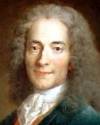 | Superstition is to religion what astrology is to astronomy; the mad daughter of a wise mother. |
 | Scientists tend to resist interdisciplinary inquiries into their own territory. In many instances, such parochialism is founded on the fear that intrusion from other disciplines would compete unfairly for limited financial resources and thus diminish their own opportunity for research. [Naming territorial dominance, greed, and fear of the unknown, as some of the influences on the increasing specialization of science] |
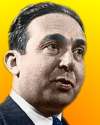 | Those individuals who give moral considerations a much greater weight than considerations of expediency represent a comparatively small minority, five percent of the people perhaps. But, In spite of their numerical inferiority, they play a major role in our society because theirs is the voice of the conscience of society. |
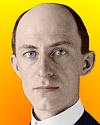 | Man, by reason of his greater intellect, can more reasonably hope to equal birds in knowledge than to equal nature in the perfection of her machinery. |
| Before you look at today's web page, see if you can answer some of these questions about the events that happened on this day. Some of the names are very familiar. Others will likely stump you. Tickle your curiosity with these questions, then check your answers on today's web page. | |
| Births | |
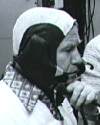 | Aleksey Arkhipovich Leonov, born 30 May 1934, was a Soviet cosmonaut who was the first man to climb out of a spacecraft in space. He was launched into space aboard Voskhod 2 with Pavel Belyayev. On the second orbit, attached to a tether, Leonov left the capsule through the airlock. He took motion pictures and practiced moving outside of the vessel for 10 minutes. Voskhod 2 made 17 orbits at about 110 miles (177 km) above earth. Ten years later, Leonov commanded the Soviet Soyuz craft that linked in orbit with a U.S. Apollo craft. In what decade did this first space walk take place? |
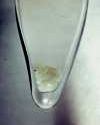 | Joseph William Kennedy, born 30 May 1916 was an American scientist, one of four co-discoverers of a new element. It was produced from uranium oxide bombarded with deuterons in a cyclotron at the University of California at Berkeley. Subsequently, on 28 Mar 1941, Glenn Seaborg, Emilio Segrè and Joseph Kennedy demonstrated that this element, like U-235, is fissionable with slow neutrons, thus neutrons of any speed, which implies it is a potential fission bomb material. After working with Seaborg, Kennedy was chosen by J. Robert Oppenheimer to lead the Chemistry Division of the Manhattan Project. What was this element? |
| Deaths | |
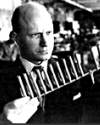 | A French inventor (1914-1994) built his business empire by creating throwaway Bic pens, razors and lighters. In 1945, he and his friend, Edouard Buffard, acquired an empty factory shell near Paris, France, and soon developed a thriving business, producing parts for fountain pens and mechanical lead pencils. Later, he spent two years developing his ballpoint pen design, and in 1949, he was able to produce a reliable, low cost ballpoint pen. In 1973 the Bic Lighter was introduced in the U.S., followed by Bic Shavers, first introduced in 1976. Can you name this inventor? |
 | Leo Szilard (1898-1964) was a Hungarian-born American physicist who, with Enrico Fermi, designed the first nuclear reactor that sustained nuclear chain reaction. In what decade was his nuclear reactor built? And where? |
| Events | |
 | In 1959, the first of a new craft made its first trip at Cowes on the Isle of Wight. It was designed by Sir Christopher Cockerell and built by Saunders-Roe. The invention was considered initially only for military use, but was released for civilian use in 1959. On 25 Jul 1959, the prototype crossed the English Channel. What was the new craft made its first trip? |
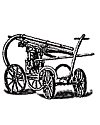 | In 1821, a fire hose of cotton web lined with rubber was patented by James Boyd of Boston, Mass. He invented it to replace another form of hose then in use. What was the material used for the older style hose? |
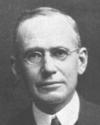 | In 1898, Morris William Travers, an English chemist, discovered a new element, while working with Sir William Ramsay in London. Its name derives from the Greek word for “hidden.” It was a fraction separated from liquefied air. When placed in a Plücker tube connected to an induction coil, it yielded a new spectrum. It had a bright yellow line with a greener tint than the known helium line and a brilliant green line that corresponded to nothing seen before. What was this new element? |
Fast answers for the previous newsletter for May 29: Chien-Shiung Wu • magnesium • motion-picture cameras to study the physical and mental development of normal infants and children • chlorine • Theory of Relativity by Albert Einstein • “The real McCoy” • Alfred (Nobel).
 If you enjoy this newsletter, the website, or wish to offer encouragement or ideas, please send feedback by using your mail reader Reply button.
If you enjoy this newsletter, the website, or wish to offer encouragement or ideas, please send feedback by using your mail reader Reply button. Your click on a Facebook, StumbleUpon, or other social button on the site webpages is also a welcome sign of appreciation. Thank you for using them.
© This newsletter is copyright 2020 by todayinsci.com. Please respect the Webmaster's wishes and do not put copies online of the Newsletter — or any Today in Science History webpage. (If you already have done so, please remove them. Thank you.) Offline use in education is encouraged such as a printout on a bulletin board, or projected for classroom viewing. Online, descriptive links to our pages are welcomed, as these will provide a reader with the most recent revisions, additions and/or corrections of a webpage. For any other copyright questions, please contact the Webmaster by using your mail reader Reply button.
--
If you do not want to receive any more newsletters, Unsubscribe
To update your preferences and to unsubscribe visit this link
Executive Real Estate Business Class
-
"It was like a man with wings. It wasn't like anything you'd see on TV or in a monster movie." ...
About the publisher
Search This Blog
Blog Archive
-
▼
2021
(585)
-
▼
May
(62)
- Tonight: Back-to-Back Premieres
- On This Day for May 31 - Adolf Eichmann hanged, Cl...
- Newsletter for Monday 31 May.
- On This Day for May 30 - Joan of Arc burned at the...
- TONIGHT at 8/7c: The Tulsa Race Massacre Revealed
- Newsletter for Sunday 30 May.
- Bundle Up For The Summer!
- On This Day for May 29 - Mount Everest summit reac...
- Newsletter for Saturday 29 May.
- On This Day for May 28 - Amnesty International fou...
- Newsletter for Friday 28 May.
- On This Day for May 27 - Founding of St. Petersbur...
- Newsletter for Thursday 27 May.
- On This Day for May 26 - Martin Luther declared a ...
- Newsletter for Wednesday 26 May.
- On This Day for May 25 - U.S. Constitutional Conve...
- Newsletter for Tuesday 25 May.
- Behind Every Empire There’s a Titan
- On This Day for May 24 - Opening of the Brooklyn B...
- On This Day for May 23 - Tibet annexed by China, C...
- Newsletter for Sunday 23 May.
- The Tulsa Race Massacre, 100 Years Later
- On This Day for May 22 - Roman Emperor Constantine...
- Newsletter for Saturday 22 May.
- On This Day for May 21 - First nonstop solo transa...
- Newsletter for Friday 21 May.
- On This Day for May 20 - U.S. Homestead Act signed...
- Newsletter for Thursday 20 May.
- On This Day for May 19 - Ringling Bros. Circus for...
- Newsletter for Wednesday 19 May.
- Learning This Fun Doesn't Need A Summer Break
- On This Day for May 18 - Eruption of Mount St. Hel...
- Newsletter for Tuesday 18 May.
- On This Day for May 17 - School segregation outlaw...
- Newsletter for Monday 17 May.
- Follow the trail of 400 facts!
- On This Day for May 16 - Warsaw Ghetto Uprising su...
- Newsletter for Sunday 16 May.
- On This Day for May 15 - Edith Cresson appointed F...
- Newsletter for Saturday 15 May.
- On This Day for May 14 - Declaration of Israel's s...
- Newsletter for Friday 14 May.
- On This Day for May 13 - U.S. declaration of war o...
- Newsletter for Thursday 13 May.
- Ridiculous History You Want To Know About!
- On This Day for May 12 - First flight over the Nor...
- Newsletter for Wednesday 12 May.
- On This Day for May 11 - “New Rome” established by...
- Newsletter for Tuesday 11 May.
- On This Day for May 10 - Nelson Mandela inaugurate...
- Newsletter for Monday 10 May.
- On This Day for May 9 - Fourth and final voyage of...
- On This Day for May 7 - Theatre Royal opened, Pyot...
- On This Day for May 5 - Mexican victory in the Bat...
- On This Day for May 4 - Four students shot at Kent...
- On This Day for May 3 - Margaret Thatcher elected ...
- Newsletter for Monday 3 May.
- TONIGHT: The Bin Laden Raid, Revealed
- On This Day for May 2 - Lou Gehrig's 2,130-game st...
- Newsletter for Sunday 2 May.
- On This Day for May 1 - May Day founded, Arthur We...
- Newsletter for Saturday 1 May.
-
▼
May
(62)
-
Blogroll
-
About
HistoryFact










0 comments:
Post a Comment